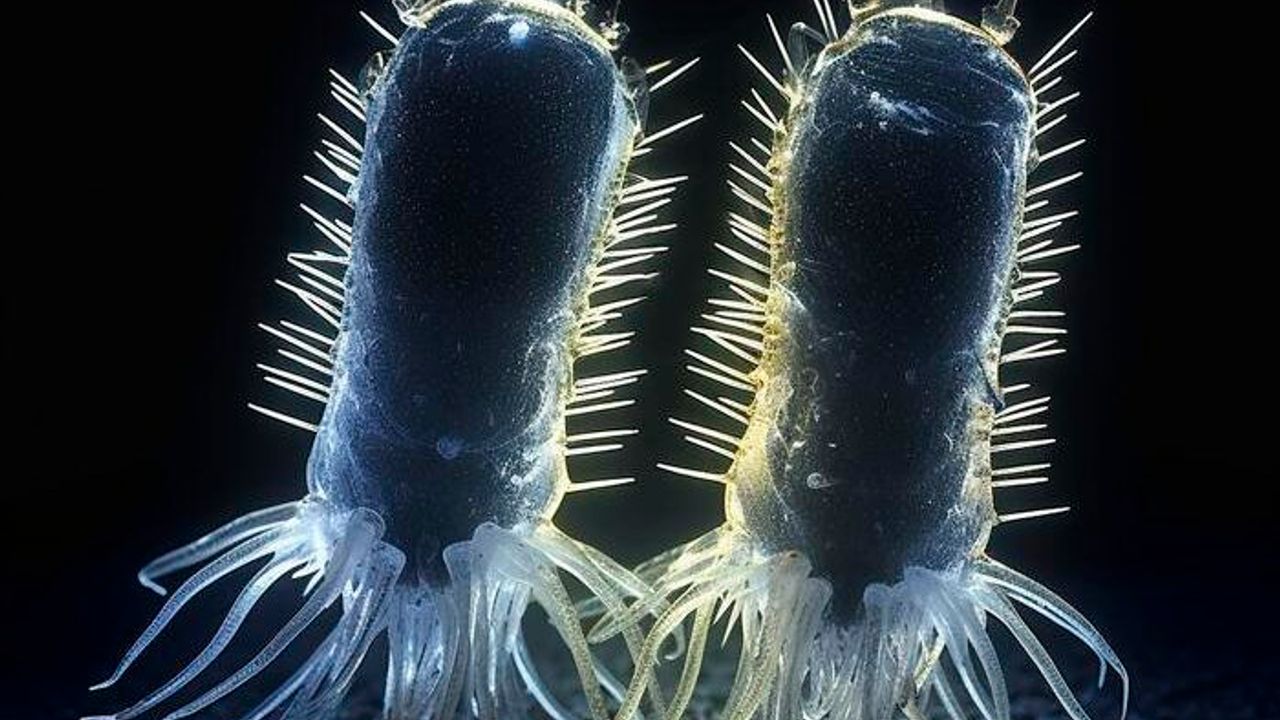The Protosterol Biota, ancient organisms belonging to the family of eukaryotes, have emerged as the latest focal point of scientific intrigue. In contrast to their simpler bacterial counterparts, eukaryotes possess a more complex cell structure housing essential components such as mitochondria, known as the "powerhouse" of the cell, and a nucleus acting as the "control and information center."
While modern eukaryotes take various forms, including fungi, plants, animals, and single-celled organisms like amoebae, it is now evident that our lineage traces back to the Last Eukaryotic Common Ancestor (LECA) over 1.2 billion years ago. However, a recent publication in the journal Nature suggests that the Protosterol Biota thrived even before LECA, possibly making them Earth's earliest predators.
Protosterol Biota Flourished in Earth's Ancient Oceans and Lakes
Scientists from the Australian National University (ANU) have made this groundbreaking revelation, unveiling the prevalence of the Protosterol Biota in ancient marine ecosystems worldwide. Dr. Benjamin Nettersheim, formerly of ANU and now at the University of Bremen in Germany, explains that the molecular remnants of the Protosterol Biota found in 1.6-billion-year-old rocks are likely the oldest remnants of our own lineage, predating LECA.
Dr. Nettersheim challenges the conventional wisdom surrounding the search for fossilized evidence of early eukaryotes, stating that physical remains have been elusive. However, their study turns this notion on its head, revealing that the Protosterol Biota were abundant in the ancient oceans and lakes that once teemed with life.
Professor Jochen Brocks, also from ANU and collaborating with Dr. Nettersheim, suggests that the Protosterol Biota were more intricate and possibly larger than bacteria, proposing that they were Earth's original predators, preying on and consuming bacteria.
Protosterol Biota's Dominance and the Ecological Turning Point
Professor Brocks elucidates that the reign of the Protosterol Biota commenced around 1.6 billion years ago and persisted until approximately 800 million years ago. This era marked a crucial juncture in Earth's evolutionary timeline known as the Tonian Transformation. During this transformative period, advanced nucleated organisms like fungi and algae began to flourish.
Professor Brocks draws a compelling parallel, likening the disappearance of the Protosterol Biota a billion years earlier to the extinction of dinosaurs, which paved the way for the abundant rise of our mammalian ancestors. Perhaps the Protosterol Biota had to make room for the emergence of modern eukaryotes.
Revolutionary Discovery of Protosterol Biota Through Fossil Fat Molecules
The international team of scientists made this groundbreaking discovery by examining fossil fat molecules concealed within a 1.6-billion-year-old rock, originating from the depths of the ancient ocean in present-day Northern Territory, Australia. These primitive molecules provided insight into the existence of complex creatures that evolved before LECA but subsequently vanished.
Dr. Nettersheim emphasizes the significance of these molecules, which were overlooked for decades due to their nonconformity to traditional molecular search parameters. He states that early oceans were believed to be predominantly inhabited by bacteria, but this discovery challenges that notion, revealing that the Protosterol Biota existed alongside them.
This monumental achievement was made possible through a collaborative effort involving scientists from Australia, France, Germany, and the United States, highlighting the global nature of scientific exploration.
Ancient Life on Earth: A Journey from Prokaryotes to Multicellular Organisms
Life on Earth emerged at least 3.5 billion years ago, as evidenced by fossilized microscopic organisms found in rocks of that age. The earliest life forms were likely simple, single-celled organisms resembling bacteria. During the Archean Eon, characterized by a lack of atmospheric oxygen and intense volcanic activity, prokaryotes, such as bacteria and archaea, dominated the scene.
Around 2.1 billion years ago, a significant evolutionary leap occurred with the emergence of eukaryotes—organisms with complex cells containing a nucleus and membrane-bound organelles. These early eukaryotes, similar to their prokaryotic predecessors, represented a substantial increase in biological complexity.
The advent of photosynthesis, pioneered by cyanobacteria, brought about the Great Oxygenation Event approximately 2.45 billion years ago, flooding the atmosphere with oxygen. Higher oxygen levels facilitated the evolution of more complex, multicellular organisms.
During the Ediacaran Period, around 600 million years ago, the first multicellular animals emerged, belonging to enigmatic groups that have since gone extinct. It was not until the Cambrian explosion, about 540 million years ago, that the ancestors of modern animal groups emerged, marking a rapid increase in biodiversity and complexity.
As we unravel the mysteries of the past, we gain invaluable insights that shape our understanding of the present and provide glimpses into the future trajectory of life's evolution. The discovery of the Protosterol Biota adds another captivating piece to the puzzle of our ancient ancestors and their incredible journey through time.
















